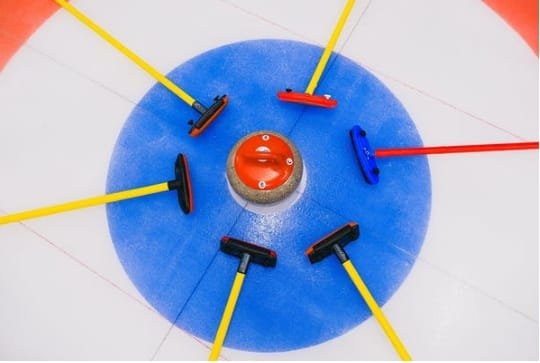
by admin | May 30, 2022 | Life, Mind
Personal Development Goals – How To Set Them
Though commonly misunderstood and undermined, goal-setting is an important aspect of your personal development process. Certainly, there is no end point to personal development, as there is always more to learn from, throughout your entire life. Walking through your life though, setting higher goals that will help you improve as a person is a must.
Now you may be asking yourself “How do I even set a goal? I have no idea what I want from life”. But let us tell you this – Those goals should concern your character development, rather than materialistic goals in the external world.
5 Personal Development Goals
Without further ado, let’s have a look at 5 of the most important traits you should set a goal to work on throughout your personal development journey.
#1 Discipline

In today’s world, people look for motivation when they have to do something that requires a bit more effort. This motivation mostly depends on external factors, thus making it unreliable and unsustainable. Instead of motivation, you should try and place a goal for developing your discipline.
This will help you do what you have to do with the minimum amount of resistance, even when you don’t feel like doing it.
#2 Focus

You probably know the overwhelming feeling when you have too much to do and start multi-tasking, bringing yourself to a burnout and anxiety quickly. Well, if you set the goal of improving your focus and attention span, these things will happen less often. As an end result, you will have a better end result with whatever it is that you are focused on.
#3 Creativity
For the most part, we tend to be in an environment where logical thinking is required and that therefore means less creative time. Try and set a goal for spending more time with your creative brain, whether that means brainstorming ideas or creating art. Remember that a part of your brain is a factory for ideas and visions!
#4 Positive Thinking

If we put aside the commonly understood concept of positive thinking, we can conclude that positive thinking can actually work. This is because, well, the brain was literally designed to look for the worst possible outcome, in order to prepare for whatever comes its way. Such a survival mechanism however isn’t really applicable in the modern-day world, where you have access to multiple solutions to any problem.
Set a goal to catch your brain in those moments and come up with the BEST possible outcome.
#5 Decisiveness
All of us have probably missed a massive opportunity at one point or another, because of indecisiveness. Set a goal to develop the way you recognize and act upon opportunities that life presents you. And not only that, just decide on things in your life which you feel are bad for you, but don’t eliminate. Decisiveness is a key trait you should aim to develop on your personal development journey.
Conclusion
When engaging in your own personal development, you should try and look for things in your own self, which you can improve. Set a goal for all of those, observe yourself, your reactions, behaviors and try to make a conscious change. Remember that this goal setting & achieving is always for your greater good!

by admin | May 30, 2022 | Workouts
How To Make Your Workouts More Effective
As the old saying goes, “nothing worth having comes easy.” The same holds true for fitness – getting in shape and achieving your goals requires hard work and dedication. But that doesn’t mean your workouts have to be a drag.
With a few simple tweaks, you can make your workouts more effective and enjoyable. Read along for some tips to boost the effectiveness of your training sessions!
#1 Stick To The Basics

One of the biggest misconceptions for trainees when they step into the gym is that they constantly have to do new and fancy workouts. This is commonly referred to as things done to “confuse the body” and push it towards progress. Supersets, drop sets, low rest times, you name it – Most trainees do a ton of weird things due to the absence of knowledge about what’s actually effective.
Truth be told, there is nothing more effective than the basics – Compound exercises, done with heavy weights, consistently over time!
#2 Train At The Right Intensity
Speaking of heavy weights, one of the most critical factors of a workout is the training intensity. By intensity, we simply mean the amount of weight used because the closer you get to your maximum strength capabilities, the higher the intensity level is.
This is, by definition, the description of ‘training intensity.’
Generally speaking, if your main goal is to increase your maximum strength, you are best off training at around 85-100% of your maximum strength capabilities (1-5 reps). Oppositely, if your main goal is to gain the maximum amount of muscle mass, you should aim at the 70-85% range (6-15 reps). Ultimately, however, you are best off combining both ranges but emphasizing the one that most suits your goals!
#3 Rest More!

If you go to the gym, you will often see people doing various exercises restlessly. As we mentioned, methods like supersets and drop sets are emphasized much more than they should be nowadays. What many people forget, however, is that the training intensity you achieve at the gym is quite demanding and strenuous, both for the nervous system and the muscles.
What does this mean for you? Well, it simply means that you’d need more rest time between sets in order to sustain your performance from set to set! Think of it this way – In every workout that you do, the goal is to create the biggest quality volume of work possible.
For instance, if you use 100 kg for 1 set of 10 reps and then rest just 30-60 seconds, you will likely only get eight or fewer repetitions on the next sets. However, if you use that same weight for multiple sets but rest more, it is likely that you will sustain the same number of repetitions, thus lifting more total weight.
Generally speaking, optimal rest times form at about 2.5-3 minutes between sets, depending on how close you were to failure.
#4 And Then Some More.
Last but not least, to make your workouts effective, you have to not only do things at the gym but also outside of it! Resting enough between your workouts is detrimental to sustained and improved performance over time. Why? Because weighted workouts are quite demanding, as we mentioned, and the body takes time to adapt and come back stronger!
Depending on the training volume, allowing each muscle group to rest between 48 and 96 hours after being trained directly would get you in the ballpark of good recovery!
Final Thoughts
We hope this article has given you some new ideas on how to make your workouts more effective. Remember, if it doesn’t work out for you the first time around, don’t give up! Keep trying different things until you find what works best for both your body and mind, but don’t forget – Stick to the basics!
And as always, stay tuned for our upcoming articles to help you improve on your fitness, nutrition, and the mental game!

by admin | May 30, 2022 | Mind
Psychology In The Last 100 Years
Important Events Part II
As we have previously established, psychology is an incredibly important part of our lives. Millions of people have been affected by the discoveries we have made in this field of study, and undoubtedly many more will be as we advance further.The way our brains work is incredibly complex, but we have made a lot of breakthroughs in understanding ourselves on a deeper level.
Here we offer you the second part of our list of the most critical events in psychology in the last 100 years, continuing with what happened in the ’50s, all the way through recent years!
1956 – The Magical Number 7 Plus or Minus 2: Some Limits In Our Capacity For Processing Information
This paper, written by George Miller, is one of the most quoted papers in psychology. Its main focus? Attention span and short-term memory. The paper suggests that an average person can hold between 5 and 9 objects in his short-term memory, known as Miller’s law. This sparked a lot of further research and helped people figure out how to improve their memory capacity.
1971 – The Stanford Prison Experiment
This notorious experiment was done in an attempt to understand the effect captivity has on people. It started on the 15th of August and was canceled just six days later after riots and brutality. The experiment included 24 male college students who were randomly assigned the roles of prison guards or prisoners.
After extensive inhumane actions done to the prisoners by the guards, the leading researcher decided to stop the experiment and send everyone home. This showed how much a prison environment changed a person and inspired a few escape attempts in the next weeks.
1981 – Sexual Preference

This is one of the most cited books on sexual orientation to this day, and it was written by Alan Bell and a team of sociologists. Their work questioned the notion that sexuality always originates from the environment and the relationship one has with their immediate family. They suggested that heterosexuality and homosexuality have their roots in biology instead of outside factors. This was met with a lot of controversies and sparked a lot of discussions but is now considered a classic work in the field.
1994 – The Bell Curve
This book was written by Hernstein and Murray and focused on their ideas about intelligence. They explain that intelligence is influenced by inherited and environmental factors and can be used as the main predictor for social standing, financial income, involvement in crime, job performance, etc.
They argued that those with high intelligence are separating themselves from others and that this is the cause of social divisions in the USA. The authors also connected race and intelligence and suggested policy implications based on said connection. The book is highly controversial to this day.
2002 – The Blank Slate: The Modern Denial Of Human Nature
This book was written by Steven Pinker in which he argues against tabula rasa. Tabula rasa is the theory that humans are born without any mental content and, therefore, all knowledge comes from perception.Pinker focuses on the effect this way of thinking has on individuals and how it can make them afraid about many different aspects of their lives.
He also gives examples of how the idea of a “blank slate” has negatively impacted the world by connecting it to totalitarianism. Most people positively received the book, and was a finalist for the Pulitzer Prize.
2013 – BRAIN initiative

This is a collaborative private and public research initiative by the Obama administration. Its goal is to support the development of innovative technologies that can help understand the human brain. It is aimed at helping private companies, universities, and researchers in the fight against Alzheimer’s, Parkinson’s, depression, and more. It’s a part of the White House Neuroscience Initiative and spans the USA, Canada, Denmark, and Australia.
2014 – Nobel Prize In Physiology
John O’Keefe and May, and Edvard Moser won the Nobel prize in physiology for their discovery of specific kinds of cells named place cells. Place cells are the ones we use when we enter a particular spatial field. They come into contact with other kinds of neurons in the brain and form a sort of cognitive map.
The cells play an essential part in episodic memory and can be found in a variety of animals. The discovery of these cells influences how we view memory and why damaging certain parts of the brain leads to different types of memory loss.
Summary
In recent times, the discoveries we have made in psychology prove how important and complex our thoughts and emotions are.
We have a lot more to learn and achieve, but our current progress is quite impressive, given the relatively short time frame it took us to reach! In the last article of this series, we explain the effect psychology has had on society in the last decade and show the parallels between the discoveries in the field and the social conditions!
Ready to learn with us on this topic one last time? Read on!

by admin | May 30, 2022 | Mind
Psychology In The Last 100 Years – Part 3
The Impact It Had On Society
Psychology underwent some considerable changes in the last century. The way people used to think back then is different in a few fundamental ways, regarding topics which are a big part of our lives. With the breakthroughs we have made in the last 100 years, we have managed not only to find the answers to some very vital questions but also to point out and fight misconceptions that negatively affected many people.
And so, how exactly has the advancement of psychology affected society in the last 100-something years?
Let’s have a look!
Behaviorism

Behaviorism was popularized in the early 20th century. Behaviorists believe that the environment causes our perceptions and actions. Thus, our behavior is simply a consequence of stimulus-response. They also support the notion that our minds start as a blank slate and focus only on observable actions.
This implies that apart from reflexes and capacity for learning, everything else is due to environmental factors and can be broken down into simple objective notions. On the positive side, behaviorism gives psychology more credibility because of its focus on facts and makes people measure behaviors and conduct experiments.
However, it disregards biology and mediational processes and more importantly, implies little to no free will. This and the fact that it completely overlooks emotions and thoughts had an overall negative effect on society. Today, a big portion of behaviorism is frowned upon because of its core ideology and common practice of entirely ignoring human emotions and complex processes.
Nevertheless, behaviorism has contributed to psychology, and its impact can still be seen today, namely in behavior therapy.
The Humanistic Approach

Humanism focuses on each individual in their entirety and does so by validating their uniqueness. This approach was developed as a rebellion against behaviorism and gained traction in the late ’60s. Its core beliefs are that humans have free will, are innately good, and want to change themselves and the world for the better.
Another vital part of humanism is that it focuses on the subjective conscious experiences of each individual, deeming this an essential aspect of being human. However, it’s important to mention that this approach also disregards biology and is highly subjective, thus making any sort of testing difficult.
Humanism had a positive impact on society regarding its focus on individuals and introducing client-centered therapy, which continues to help countless people every day. On the flip side, humanism lacks almost any empirical evidence and is ethnocentric, focusing on individualistic societies as opposed to collective ones (for example USA as opposed to India).
Thanks to this approach, however, a more holistic point of view was born, and this changed people’s lives on an individual level for the better.
Cognitive Psychology

The technology revolution made its way into all fields of science, and psychology was no different. Cognitive psychologists view the mind as similar to a computer, and they accept the use of the scientific method while rejecting introspection. They also acknowledge the existence of internal mental states and focus mainly on memory, language, attention and perception.
This approach positively affects society in different aspects – because it views psychology as a science, it offers a lot of tangible proof and develops multiple research methods. Therefore it has been implemented in many different fields such as education and neuroscience. However, the cognitive approach has a limited focus on the processes in the brain, brushing aside some of the creative, emotional, and social aspects of it.
Today, this is one of the approaches in psychology used the most and has had a massive influence on society. Cognitive Behavioral Therapy is just one example here!
To Wrap It Up
The way psychology has impacted our lives can be seen in many different aspects. From the way our societies act to our individual ways of thinking. The different approaches in psychology have had a massive effect on the world and will undoubtedly continue to do so.
What’s interesting here are the parallels between certain discoveries, different approaches, and social events. Through these connections, one can quickly see how integral psychology really is in shaping the world. We hope you’ve learned something from this article series and will continue to do so by frequently visiting our blog!
Stay tuned!

by admin | May 30, 2022 | General, Health
Ramadan Tips | Part 1 – Foods To Eat During Ramadan
The holy month of Ramadan is a 4-week period, during which Muslims fast, avoid certain foods, abstain from pleasures, and pray more often. Ramadan is a time of spiritual reflection and one of the main goals of it is to become closer to God.
However, due to the exclusion of certain foods, it is recommended that you pay a bit more attention to the nutritional side of Ramadan, especially if you are an active trainee. In this article, we’ll give you a list of the foods you should focus on during the holy month.
The Change Of Habits

One of the things about Ramadan that we need to pay more attention to, is that it MASSIVELY shifts your eating frequency & pattern. During the holy month, Muslims consume food ONLY before dawn (called “Suhoor”) & after sunset (Called “Iftar”). This leaves a big window of fasting time, meaning that your morning & evening meals should be abundant in nutrients, to keep you energized and satiated for the entire duration of your fast.
Suhoor Foods
If you want to have energy for all your physical and mental activities between Suhoor & Iftar, you MUST make sure that your first meal is dense in nutrients.
Furthermore, you should choose food sources that are not too dry, but rather ones that will keep you hydrated, as well as drink plenty of water during meals. The latter is important because as per the Islamic rules of fasting, no food or drink can be consumed during your fast.
And so, each Suhoor meal has to :
- Keep you satiated
- Keep you energized
- Keep you hydrated
- Provide micronutrients
Here are our best picks for Suhoor foods:
- Eggs
If you’re fasting for 12 hours, you MUST make sure to have high protein & high dietary fat foods in your diet, since this is what will keep you satiated for the most part. Eggs are one of the best foods you can have during the holy month, simply because they provide plenty of quality protein, fats, and micronutrients.
The best thing? Eggs can be boiled, scrambled, and even made into an omelet – Whatever your taste buds like!
- Starchy vegetables, fruits & Oats
To further boost the satiating index of your suhoor meals, you can include food products that are abundant in dietary fiber & quality carbohydrates. Dietary fiber is not really absorbed by the body, but it slows down digestion, thus granting a gradual increase of energy & a full stomach for longer.
The best picks here are starchy vegetables like carrots and potatoes, along with fruits and oats.
- Micronutrient-rich products
Now, especially when Ramadan falls in the warmer months, it is very important to consume food products that have decent amounts of vitamins and minerals in them. This is important because, during warmer months, you sweat a lot during the day, thus excreting water & micronutrients that your body needs.
The best food products you can have during suhoor, which will give you those micronutrients, are foods like milk, yogurt, as well as fruits, and veggies.
Iftar Foods

Alright, it’s been roughly 12-14 hours since your last meal and it is now time to break the fast with a post-sunset meal! As important as Suhoor is, it’s just 50% of the whole thing, as iftar nutrition too, requires more of your attention. One of the key considerations is to break your fast with a balanced plate, which will still allow you to meet all the body’s needs for essential nutrients and compensate for any elements you may have lost during the fasting period.
It is also recommended that you start off with the lighter foods on your plate, to wake up your digestive system and signal it that it’s time for a large meal!
Here are our best picks for your iftar meals:
- Halal meats
After a prolonged period of fasting, your body will LOVE a solid amount of high-protein food. Halal meats can be consumed during iftar, as they will give your body plenty of essential protein, fats, as well as certain micronutrients like iron.
This, in turn, will keep you full and satiated and won’t leave your stomach to screech in the time before you fall asleep. TIP: Try to break your fast with a healthy drink and eat some fruits before eating any meat.
- Fruits & Vegetables
As we already mentioned, fasting, and especially fasting during the warmer months, may lead to the excretion of certain essential vitamins and minerals. This is why, even at iftar, it is important to consume vitamin & mineral-rich foods, such as fruits and vegetables. You can (and should) assemble two plates of leafy and starchy vegetables, along with fruits like bananas, citrus fruits, dates, and raisins.
- Nuts
If you tend to be someone who’s hungry all the time, then perhaps the best way to deal with this is to consume nuts! Nuts are low in volume, high in calories, and rich in dietary fats, along with certain micronutrients. Still feeling hungry after a bowl of meat, vegetables, and some fruits? Eat a handful of nuts!
Take-Home Message
For the most part, Ramadan is a time during which one must be more focused on one connection with God, as well as their own spiritual path. Though this is a time when any physical pleasure should be avoided and reflected upon, you still have to give your body the nutrients it needs, to sustain healthy functioning.
Ultimately, because you will be fasting for the most part, you must focus on a couple of things:
- Eating protein & fat-rich foods to keep you satiated
- Eating vitamin and mineral-rich foods to optimize physiological function
- Drinking plenty of fluids
By taking care of all 3 aspects, you will be able to have enough energy for the entire day, without having to think too much about food, during your fast. Now, it is important to know what to eat during Ramadan, but one of the most important things is to know what to AVOID.
In the second part of the Ramadan article series, we’ll give you insight on some of the WORST food/drink choices you can make during Ramadan.
See you there!





















